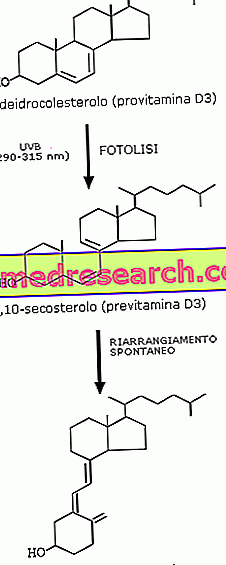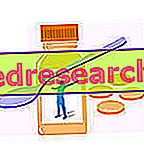Edited by Andrea De Lucchi
The 13 Rules of Time Feeding
The principles of chrono-feeding can be summarized in the following rules of behavior, observing which it is possible to reduce body weight following the biological rhythms of our organism.
1) The meal times, as well as their quantity and composition, must also be chosen based on the individual tendency to fuel more in the morning or afternoon: the morning type, for example, will have a hearty breakfast after waking up, while the nocturnal one may delay the intake of the first solid foods to the mid-morning snack. In the same way, the nocturnal type will postpone all meals with respect to the morning type, shifting the intake of food to times farther away from awakening.
2) Cereals and their derivatives (bread, pasta, rice, breadsticks, flour, semolina, biscuits, crackers, rusks, oatmeal or corn flakes etc ...) should be consumed in the first part of the day (from 7 to 15).

3) Among the carbohydrate-based foods, those subjected to fine division or elimination of fiber should be avoided. To the white sugar, therefore it is to prefer that of cane, and for the same reason to cereals without bran those integral. Rice and corn are also better suited to potatoes, bread and pasta, which are digested more quickly due to the small size of their starch particles. Some baked desserts can be consumed for breakfast, but creams and pastry products are certainly to be avoided.
4) The meat, the fish, the eggs and the dairy products must, alternately, constitute the evening meal (from 20 to 22:30). The choice will fall more frequently on one or other of these foods, depending, for example, on one's own cholesterol level in the blood (if it is high, one will tend less often, as is obvious, towards fat eggs and dairy products), or predisposition to osteoporosis (therefore dairy products will increase) or tendency to gout (meat will be avoided); in short, based on the general considerations that make each of these food groups more or less safe for wellness. Three times a week you can eat protein foods for lunch instead of first courses. For the amount of protein-based foods, it will be enough to limit yourself to a regular portion each time: common sense is always better than scales.
5) Vegetables except legumes and vegetables must be present at both main meals; those more rich in sugars (garlic, beets, carrots, artichokes, chicory, Brussels sprouts, dried mushrooms, onions, onions, broccoli, sauerkraut, tomatoes, catalogna, cabbage, turnips) should be consumed for lunch together with carbohydrates; all the rest, on the other hand, can be hired indifferently for lunch and / or dinner.
6) Seasonal fruit should be eaten before 17-18: it can therefore be used for breakfast or lunch, but should be avoided at dinner. The ideal, in any case, would be to use it for the mid-morning snack, and for the afternoon snack, in the latter case however preferring the less sugary fruits (pineapple, grapefruit, strawberries, cherries, watermelons, peaches, melons, raspberries ). The fruit must be introduced whole and not in the form of juices or juices. Only grape juice allowed. In one day, the right amount is indicatively, as a volume, with two medium-sized apples. Canned fruit should be avoided.
7) The consumption of wine and beer should be avoided at lunch; a moderate intake of these drinks, if it is appreciated, is instead allowed to the predominantly protein evening meal, as alcohol facilitates the digestion of proteins.
8) Meals should not be skipped; when this happens, it must be remembered that "recoveries" are not allowed in the intake of food outside the established time for each person (you cannot eat pasta forcibly not consumed at noon!)
9) Condiments should not be used in an immoderate manner, but neither should they be abolished; to favor vegetable fats (especially olive oil) compared to animal fats like butter, lard, lard.
10) The menus must be varied and appetizing: it is not necessary to go hungry, there are no penalties to be served; the worst enemies of weight loss are monotony and repetitiveness.
11) It may be useful to take some coffee (with sweetener) but not after meals containing carbohydrates. Wine, beer and coffee should not be associated with carbohydrates especially in September and October.
12) Foods to be avoided:
Lard, lard, bacon, butter, mascarpone;
Fatty parts of the meat;
Sausages in general except lean and dried ham;
Fatty fish (eel, carp, salmon)
Whole milk and yogurt;
Cheeses with a fat content of over 30%, except pecorino, used in moderation, as a condiment;
Refined sugars.
13) Meals must be five: breakfast, mid-morning snack, lunch, afternoon snack, dinner. Lunch must be the main one, immediately followed by consistency from dinner. Breakfast and a mid-morning snack have the task of providing sufficient energy for the day and for this reason one of the two meals must be complete: overall they must include, along with tea or coffee, milk or low-fat yogurt and a derivative of cereals such as bread, rusks, biscuits, oat flakes, and so on. The dinner, in which one must never exceed with the quantity, must not take place close to the night's rest.
See also: the chronodiet
NB: these indications are only food recommendations for a healthy and correct diet and, why not, lose a few extra pounds. They are also to be adapted according to the person's somatotype, his needs (work, sports, pathologies etc ...). However they do not intend to replace the opinion of the doctor and the dietician.



